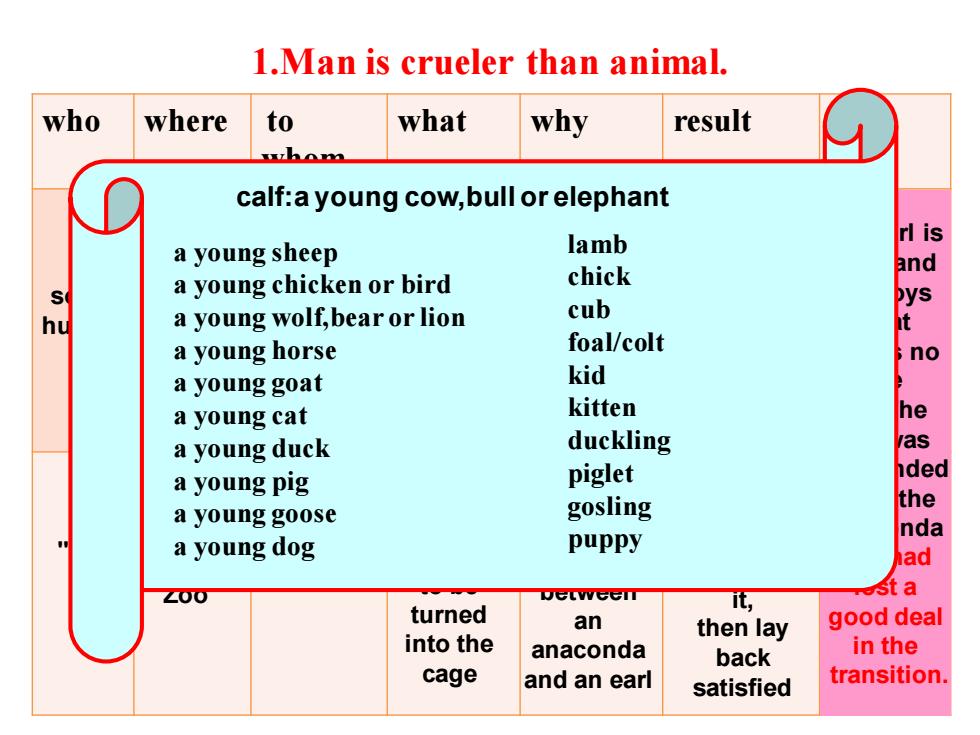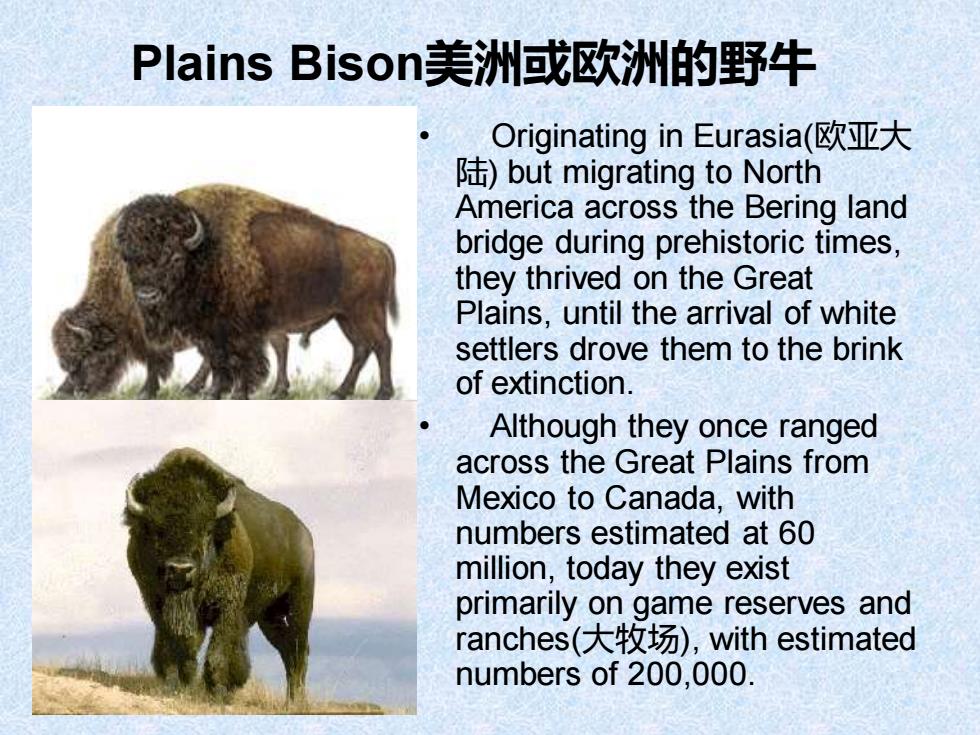
1.Man is crueler than animal. who where to what why result calf:a young cow,bull or elephant a young sheep lamb a young chicken or bird chick and cub hu a young wolf,bear or lion a young horse foal/colt no a young goat kid a young cat kitten he a young duck duckling 9 a young pig piglet gosling the a young goose nda a young dog puppy ad petween st a turned it, an good deal into the then lay anaconda back in the cage and an earl satisfied transition
1.Man is crueler than animal. who where to whom what why result trait "I" the anacondas some hunters on our Great Plains in London Zoo an English earl organized a buffalo hunt caused 7 young calves to be turned into the cage to entertain and provide some fresh meat for his table to determine the difference between an anaconda and an earl Killed 72, ate part of one of them the left the 71 to rot crushed one of them and swallowed it, then lay back satisfied The earl is cruel and destroys what he has no use for. The earl was descended from the anaconda and had lost a good deal in the transition. calf:a young cow,bull or elephant a young sheep a young chicken or bird a young wolf,bear or lion a young horse a young goat a young cat a young duck a young pig a young goose a young dog lamb chick cub foal/colt kid kitten duckling piglet gosling puppy

Plains Bison美洲或欧洲的野牛 Originating in Eurasia(欧亚大 but migrating to North America across the Bering land bridge during prehistoric times, they thrived on the Great Plains,until the arrival of white settlers drove them to the brink of extinction. Although they once ranged across the Great Plains from Mexico to Canada,with numbers estimated at 60 million,today they exist primarily on game reserves and ranches(大牧场),with estimated numbers of 200,000
Plains Bison美洲或欧洲的野牛 • Originating in Eurasia(欧亚大 陆) but migrating to North America across the Bering land bridge during prehistoric times, they thrived on the Great Plains, until the arrival of white settlers drove them to the brink of extinction. • Although they once ranged across the Great Plains from Mexico to Canada, with numbers estimated at 60 million, today they exist primarily on game reserves and ranches(大牧场), with estimated numbers of 200,000